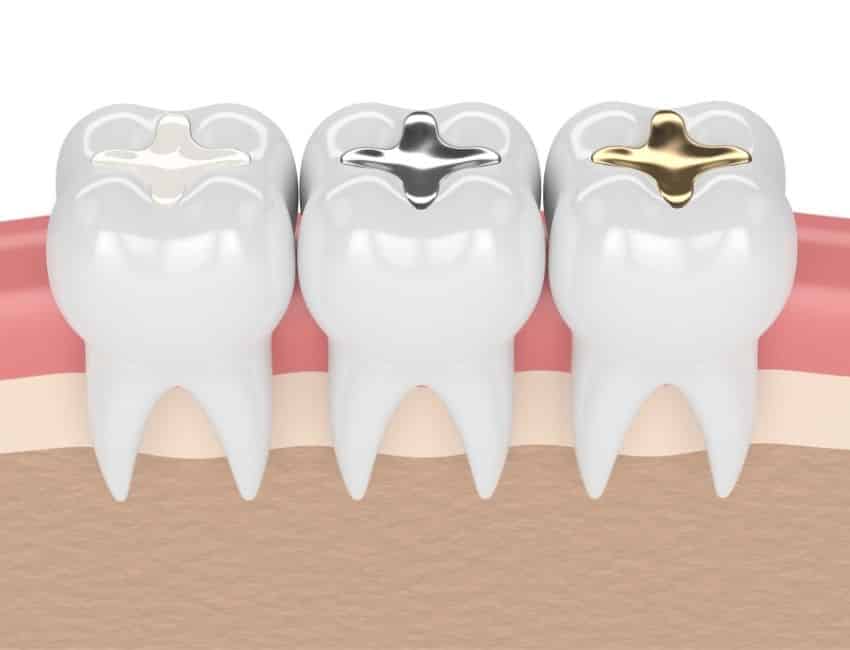What causes cavities?
You might have heard that tooth decay occurs as a result of eating too many sweets, and it’s partially true.
Cavities don’t happen overnight. There are actually stages to their formation, beginning when bacteria damage the surface of your enamel and spread deeper into the tooth. Sugar left on your teeth provides a habitat for bacteria that then damages your enamel with acids and forms plaque. That plaque continues to eat away at your enamel, infiltrating your teeth and forming a cavity.
What are fillings made of?
Fillings are generally the most popular solution for tooth decay, so much so that there are several types. Amalgam fillings are mixtures of metals, which makes them good at fending off cavities. Composite fillings are combining glass or quartz with resins, making them durable and also able to match your natural teeth. Other less common options include gold, ceramic, or glass ionomer fillings.

How to take care of your fillings?
Just like you need to care for your teeth, properly caring for a filling is key. Though some people might experience sensitivity immediately after getting a filling, that typically goes away after a few days or hours.
After a filling, you’ll have a few days of sensitivity to spicy, acidic, and other harsh food. That can be tough at first, but the good news is that most people get over it after a couple of days. And if you take proper care of your mouth, your filling can last for years without decay. Floss once a day and brush twice with repairing toothpaste to keep your mouth healthy — it keeps your breath fresh, too!
Recommended post: 7 Tips to keep your teeth clean
What are temporary fillings?
Temporary fillings are temporary fix-ups for cavities, and if you don’t replace them with permanent ones, you could end up having a painful cavity. Temporary fillings can easily fall out or crack, causing you to get a temporarily filled tooth infected. A cavity without treatment causes your tooth to become more fragile and weak — potentially leading to other complications, like having a tooth rot off.
What’s the process of tooth-colored fillings?
Several additional steps are required for tooth-colored fillings. First, your dentist will remove any remaining decay and clean the area. Next, your dentist will prepare your tooth to receive a top layer of tooth-colored material by cleaning out the cavity and placing a temporary filling. After that, your dentist will apply several layers of tooth-colored material to the cavity. The number of layers will depend on the size of the filling needed.
What causes tooth sensitivity after the tooth filling?
Tooth sensitivity after placement of a filling is fairly common. Your tooth may be sensitive to pressure, air, sweet foods, or temperature. Usually, the sensitivity goes away on its own within a few weeks. Until then, avoid the cause of the sensitivity. You usually don’t need to take a pain reliever.
Contact your nearby dentist if the sensitivity doesn’t go away within two to four weeks or if your tooth is extremely sensitive.
Can a person be allergic to dental fillings?
Allergies to dental amalgam are rare, but they are known to happen. The ADA estimates that fewer than 100 cases are reported each year in the US.
An allergic reaction may be caused by mercury or one of the metals used in an amalgam restoration. If you’ve had an allergic reaction to dental amalgam, it’s possible that you have a medical or family history of metal allergies. Another restorative material can be used once your allergy is confirmed.
Does insurance cover the cost of dental fillings?
While dental insurance coverage varies, most policies will only pay for the cost of a composite filling to match the cost of the original silver one; if you’re looking for a higher-quality filling, you’ll have to pay the difference. It’s always best to contact your policy issuer before any procedures about cost and coverage.

